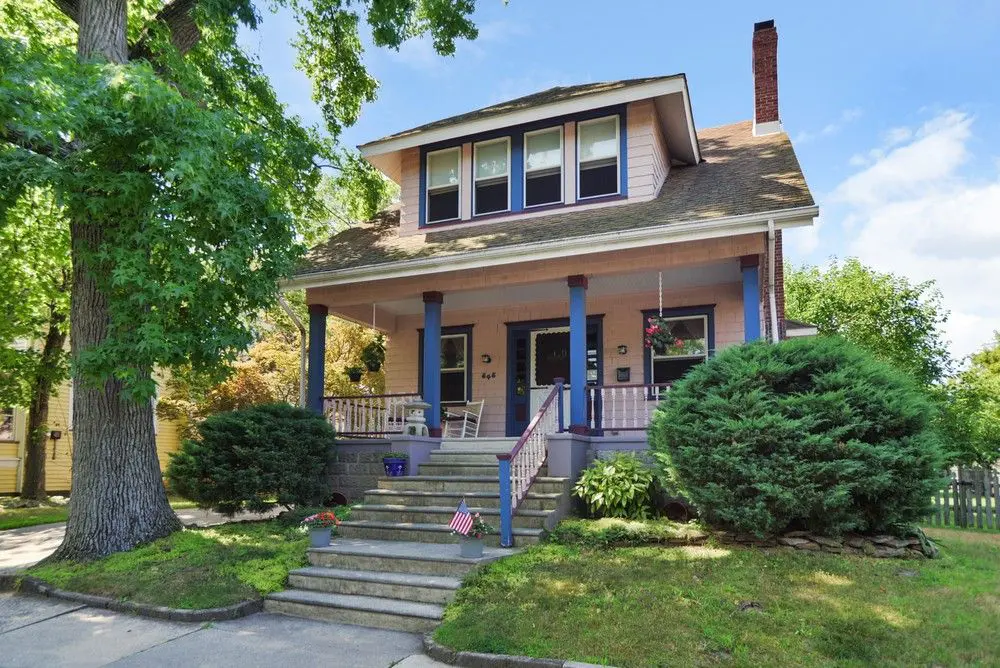none
The Beleaguered Bungalow’s History
For over thirty years, Al Heavens, a nationally syndicated home-improvement writer and author based in Haddonfield, New Jersey, has been providing 50 million readers with the latest remodeling information through his newspaper columns, magazine articles, and books. In addition to being “The Gadgeteer” on Discovery Channel’s Home Matters program, he is the author of What No One Ever Tells You About Remodeling on The Money: Fifteen Innovative Projects Designed to Add Value to Your Home.
I used to drive around the townships and boroughs next to the Delaware River after moving to South Jersey more than 20 years ago, stopping to look at the older housing stock, particularly the bungalows.
We spent the first year we lived here renting a bungalow. We bought a bungalow a few months after we signed the lease; it’s a 1929 Craftsman-style home that we think the original owner bought from Sears, Roebuck & Co.
The previous owners’ remodeling efforts, particularly the addition of a kitchen, did not affect the original house in the slightest, despite my disapproval of some of the modifications they had made.
These modest homes, which are common in this area, are, all too frequently, altered to the point of being unrecognizable. If you take a ride on the High-Speed Line through Haddonfield, Haddon Township, and Collingswood, you will notice improvements that overshadow the original construction.
Bungalows appear to be of very little interest in this area.
In contrast, the bungalow and its restoration have become something of an art form in Southern California and the surrounding areas of San Francisco.
As I’ve previously stated, many of the bungalows in our area are hidden beneath later renovations that frequently didn’t treat them well. However, our appreciation of Victorian architecture didn’t really take off until the 1970s.
The mail-order bungalow was a huge relief to many during the time when mortgages were not easily accessible and most people had to save for years before they could afford a home.
Additionally, since Sears, Roebuck & Co. produced the majority of the goods in the early 20th century, prayers were most frequently offered up to them.
The Modern Homes Department at Sears sold over 100,000 homes between 1908 and 1937, many of them fully furnished. Sears wanted to establish a market for the remainder of its products by offering whole houses.
The retailer even provided plans that illustrated the ideal placement for a Sears piano or sofa.
There were other suppliers of “ready-cut” houses besides Sears. Before Sears, there were companies like Montgomery Ward, Aladdin, and Palliser & Palliser. But Sears led the market in sales by the 1920s.
According to corporate literature, Sears’ home-building division was “the biggest home-building organization on earth” by 1932.
It employed 2,500 people. Its 17-acre sash and door factory in Norwood, Ohio, was capable of producing millwork valued at $3.5 million per year.
In fact, Sears offered the financing, which required a 25% down payment and up to 15 years to pay it back. Sears would lend the buyer up to $3,750 if the house cost $4,000 and the buyer’s lot was worth $1,000. The buyer would pay $32.30 a month for the first four months after purchase, with a $250 cash investment.
It was a component of a mail-order marketing campaign designed to promote other products by Sears and associates.
Everything arrived on a railroad car in a package. After the Victorian era came to an end and Colonial Revival gained popularity, it became simpler to build and transport the homes.
And the prices were reasonable. These homes normally cost between $650 and $2,500 in 1908. However, a two-room cottage without a bathroom could be purchased for as little as $146.25.
The 1986 release of “Houses by Mail: A Guide to Houses from Sears, Roebuck & Co.” reignited curiosity about the storied Dutch Colonials, bungalows, cottages, farmhouses, and barns—roughly 450 models bearing monikers like Vallonia, Puritan, Rembrandt, and Berwyn—that occupied Sears house catalogues for nearly thirty years.
The National Trust for Historic Preservation, which still promotes the preservation of Sears homes, published the book.
Companies that wanted to house their employees close to factories frequently constructed bungalows. The masonry rowhouses were awarded to lower-class labor. However, early in the 20th century, executives and managers received bungalows.
For instance, twelve mansions were constructed for the top executives of the long-gone American Magnesia Co. in Plymouth Meeting, Pennsylvania, close to the current Norristown Pennsylvania Turnpike interchange.
The 1921 Modern Homes catalog featured a picture of the Peach Run development. Peach Run was demolished to make way for the turnpike.
A check through old phone books and city directories reveals that there were contractors who were experts at putting together mail-order houses. Apart from the fact that they arrived in full packages, there was nothing particularly unique about them.
Nothing about Amazon surpasses the Sears catalog. Additionally, I haven’t seen any full house kits on the Amazon website, aside from dolls.
The mail-order house industry was destroyed by the Depression. After making the error of entering the home financing market, Sears was forced to foreclose on the same families that it had successfully persuaded to purchase its houses.
The Modern Homes Department’s accounts were liquidated in 1934, despite the fact that Sears houses could still be purchased until roughly 1940.
Factory-built homes are now a competitive option to stick-built homes. Big pieces are easily transported to a construction site and put together fast.
Similar to the past times. With the exception of the absence of a piano.

